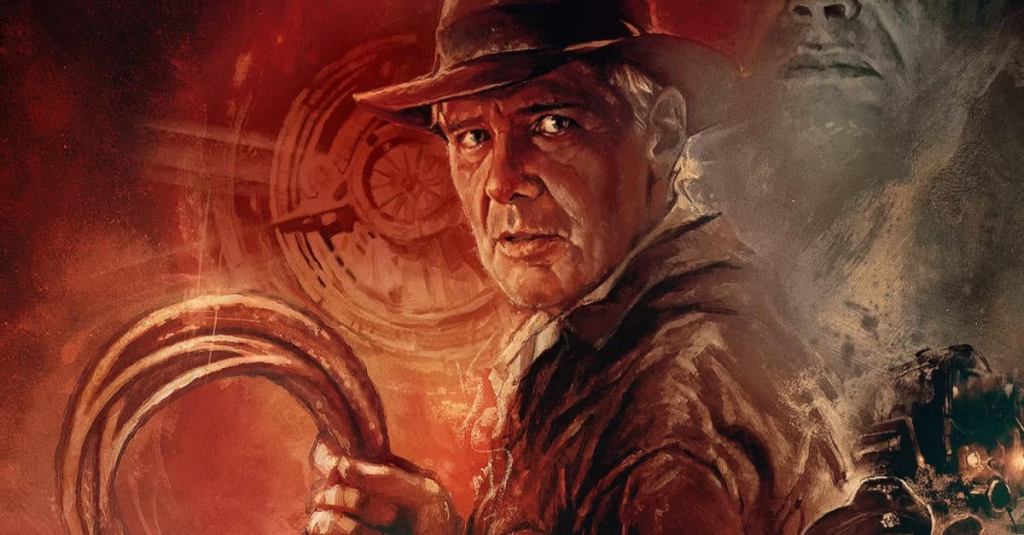Indiana Jones and the Dial of Destiny is now out in theaters, and fans of the series likely have a lot of questions about the film’s rumored time travel storyline. If you want to know if and how time travel factors into Indiana Jones 5, and you don’t care about SPOILERS, read on below!
Videos by ComicBook.com
It’s understandable if some viewers want to know upfront if this latest Indiana Jones movie goes too far out there with its sci-fi mysticism. After all, the most common criticism of the previous film, Indiana Jones and the Kingdom of the Crystal Skull, is that its climactic reveals of alien influence on Earth were too out of place in the Indiana Jones franchise. So if we’re talking time travel, that’s a story trope that can easily go off the rails – even in sci-fi films built around that plot device.
How Indiana Jones and the Dial of Destiny Uses Time Travel Explained

The main plotline of Indiana Jones and the Dial of Destiny sees Indy (Harrison Ford) pursued by competing forces who are all after the same prize: Archimedes’s Dial. The Ancient Greek scientist, mathematician, engineer, and inventor had theorized that there were “fissures in time,” that could be predicted and mapped – pockets where the space/time continuum could be breached. Nazi mathematician and physicist Jürgen Voller (Mads Mikkelsen) pursues Indy and his god-daughter Helena Shaw (Phoebe Waller-Bridge) across the world, tracking down the halves of Archimedes’s Dial and the key to connecting them. Ultimately (and in classic Indiana Jones fashion) Voller gets the dial and leads a chase to one of the time fissures he predicts will take him back to 1939, where he’ll kill Adolf Hitler and install himself as a “better” leader for the Nazis.
Dial of Destiny’s Ending & Time Loop Explained

Unfortunately for Voller, his calculations were off, and instead of entering a time portal back to 1939, he ends up traveling all the way back to Ancient Greece, during the infamous Siege of Syracuse by the Romans. Voller and his men die in a fiery plane crash after their plane and Indy’s plane are both critically damaged by Scorpion harpoons fired by the Roman ships. Indy and Helena parachute safely to the shore, where they are met by Archimedes himself.
Earlier in the film, Indiana Jones and Helena discover the final half of Archimedes’s Dial buried with the man himself; however, when they open his tomb, they find Archimedes’s remains also contain evidence of future knowledge and technology (a wristwatch). Indy and Helena take this discovery as proof that Archimedes was a time traveler, who must’ve come to the future at some point. When they instead travel to the past and meet Archimedes, Indy realizes that Archimedes was actually influenced by them, traveling back in time. By showing Archimedes the completed Dial of Destiny, and leaving behind his watch, Indy actually inspires the famous scholar to create his Antikythera machine (the dial) and other create mathematical and physics theories that will influence science throughout history.
The movie toys with the idea of keeping Jones in Ancient Greece as the man who helps Archimedes in his studies – but fearing the dangers of paradox, Helena instead knocks Indy out and takes him back to the future, leaving just the dead Nazis and the plane wreckage (as well as Indy’s gifts) as the inspiration Archimedes uses.
This climatic sequence of Indiana Jones and the Dial of Destiny is a big leap for the series – but it arguably plays better than the extraterrestrial reveals of Kingdom of the Crystal Skull. Indy getting the history he loves to study so passionately was fitting for the character and added a nice twist to the story.
Indiana Jones and the Dial of Destiny is now in theaters.








